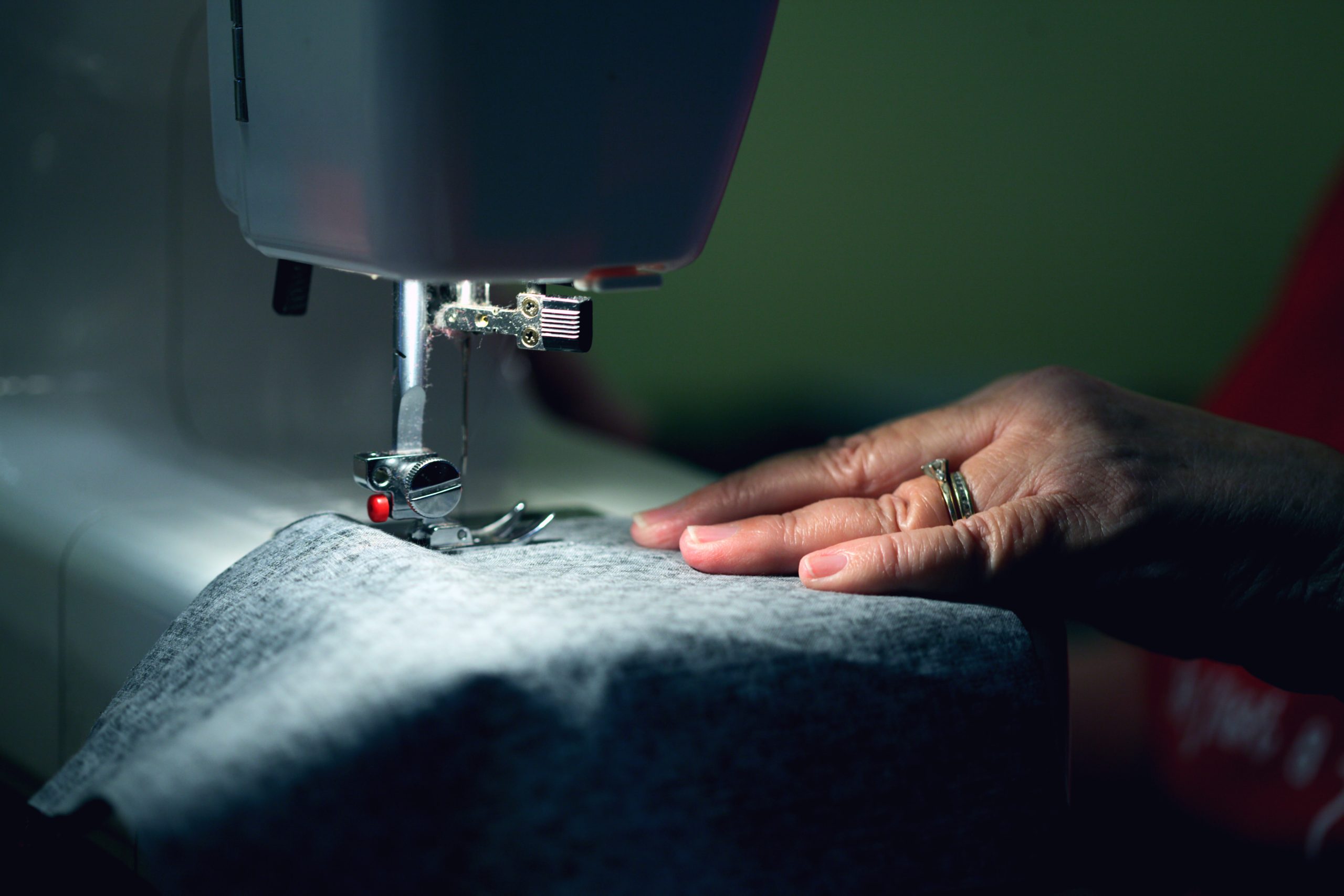 Sewing with stretchy fabrics, also known as knits, requires a slightly different approach compared to sewing with woven fabrics. Here’s a step-by-step guide to help you sew stretchy fabrics successfully:
Sewing with stretchy fabrics, also known as knits, requires a slightly different approach compared to sewing with woven fabrics. Here’s a step-by-step guide to help you sew stretchy fabrics successfully:
Materials You’ll Need for sewing stretchy fabrics:
- Stretch or ballpoint sewing machine needle
- Polyester or nylon thread (provides stretch)
- Sewing machine
- Scissors or rotary cutter
- Pins or clips
- Fabric marking tool
- Measuring tape
- Iron and ironing board
- Seam gauge
- Optional: serger/overlocker
Step-by-Step Guide:
Choose the Right Fabric: Select a knit fabric that suits your project. Jersey, interlock, rib knit, and spandex blends are common choices. Make sure the fabric has good stretch and recovery.
Prepare Your Workspace: Set up your sewing machine and ensure it’s in good working condition. Clean the feed dogs and install a stretch or ballpoint needle.
Choose the Right Stitch: Use a stretch stitch to allow the seam to stretch without breaking. Options include zigzag stitch, stretch straight stitch, or a lightning bolt stitch. Test on a scrap piece of fabric to find the best stitch width and length for your fabric.
Thread Selection: Use polyester or nylon thread, which have some stretch, unlike cotton thread.
Cutting: Place the fabric on a flat surface. Use sharp scissors or a rotary cutter to cut your fabric pieces following the pattern. If using scissors, make long, smooth cuts to prevent stretching the fabric.
Marking: Use fabric-friendly marking tools such as chalk or disappearing ink pens to mark pattern notches and other important points.
Pin or Clip: Instead of using traditional pins, which can create holes in knits, use clips or ballpoint pins to secure your fabric layers together. Be careful not to stretch the fabric while pinning.
Seam Allowance: Check your pattern for the recommended seam allowance. Usually, a 3/8″ (1 cm) seam allowance works well for knits.
Sewing: Start sewing slowly, gently guiding the fabric without stretching it. Use your fingers to slightly stretch the fabric in front of and behind the presser foot to prevent puckering. Backstitch at the beginning and end of seams.
Hemming: For hems, you can use a twin needle to create a neat, stretchy finish. Alternatively, use a zigzag stitch or coverstitch for a professional look.
Finishing Seams: If you’re not using a serger, consider trimming the seam allowances close to the stitches to reduce bulk. Finish the edges with a zigzag stitch or an overcast stitch on your sewing machine.
Pressing: Use a low to medium heat setting on your iron, and always press gently without stretching the fabric. Place a press cloth or thin piece of fabric between the iron and the knit to avoid direct heat contact.
Try on and Adjust: Once your garment is sewn, try it on and check for fit. If adjustments are needed, make them carefully, considering the fabric’s stretch properties.
Remember, practice makes perfect when it comes to sewing with knits. It’s a good idea to experiment on scrap fabric first to get a feel for your machine’s settings and the techniques that work best for the specific knit you’re using.


